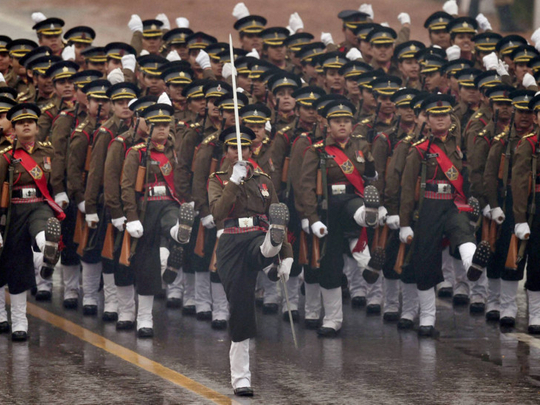
As India celebrated its 66th Republic Day with much fanfare in the presence of US President Barack Obama, it has diligently, over the years, turned the parade that was initially envisaged as a platform to demonstrate military might into one that exhibits its soft power to the world.
For a country known to the world as the land of Mahatma Gandhi, non-violent, tolerant, home to the world’s largest pluralistic democracy, soft power draws more global attention than chunks of steel rolling down Rajpath.
Over the years, India has nurtured an image for itself that is rare among the great nations of the world. An image that gives New Delhi a unique soft-power advantage in this multi-polar world which not only helps it to earn many friends but also to pose as a neutral entity among many warring nations.
For a nation also known as the land of Buddha, such a benign image has helped it to overcome many international hurdles, where the West — particularly Africa, the Middle East, South America and Southeast Asia — view India as a neutral and harmless country.
The Republic Day parade is probably the biggest exhibition of India’s unique strength, where over the years the emphasis has shifted from battle tanks to civil uses of nuclear technology and government initiatives like ‘Make in India’ and protection of the girl child.
Many commentators have said that India forced Obama to see a parade of obsolete military machinery mostly bought from Russia, his country’s long-time bete noir and all he could do as a gracious guest was clap at the stunt of the motorcycle riders.
But India was not showcasing its military might. The country knows its place amongst nations and is keen for a defence tie-up with the world’s most powerful nation. If the US first couple had paid a little more attention they would have certainly seen the cultural diversity of India that was being paraded before them.
The central theme in the country under Prime Minister Narendra Modi’s government is growth, especially in sectors like tourism, industry and energy. To attract the global audience as the parade was being beamed across the world, 16 Indian states and Union Territories that had participated in last Monday’s gala show were all keen to showcase their respective cultural history, personalities and biodiversity rather than try to prepare the mind for world domination.
The idea of soft power has changed over time. During the Roman era, spices and cloth were sought-after items and India was viewed as a land of wealth and prosperity. Over the years, it has changed to democracy, Bollywood, yoga, strong diaspora, youth, its large market and skill-set with which Indians all over have contributed to the welfare of mankind.
If India really had aspired to a similar kind of firepower it would have led to an arms race in South Asia and with unsure neighbours, both on its western and north-eastern borders, it could have had the possibility of a catastrophe.
Path-breaking idea
Instead, India since Independence has crafted an image for itself that “threatens no one” and “is friend to many”. Its first prime minister Jawaharlal Nehru’s path-breaking idea of non-alignment has come to serve the country well since the declaration of the republic in 1950.
In spite of having tested nuclear weapons twice, in 1974 and 1998 and being a non-signatory to the Non-Proliferation Treaty (NPT) and Comprehensive Test Ban Treaty, India has emerged as a key player in nuclear commerce and at the same time it is a strong believer in global disarmament.
Several Indian prime ministers have passionately campaigned against nuclear arms. One of the most notable pleas for global disarmament was made by Rajiv Gandhi at the United Nations General Assembly in 1988.
If anyone thinks that India is fast shedding its past of non-alignment and moving towards being pro-US in its foreign policy, he or she will be mistaken. Contrary to the concerns of its neighbours, who had strongly reacted to its new-found bonhomie with the US, India seeks technology to elevate itself.
Pakistan — though concerned as Obama is probably the first US president who did not bother to make a stopover at Islamabad after visiting India — should let its guard down. In spite of years of animosity and having fought three wars, Indians do not have the bandwidth for a military showdown and are not really bothered about regaining geographical space in Pakistan-administered Kashmir.
India wants to ally with one and all. A path certainly difficult to tread considering the geopolitical differences, but for a country whose primary concern is not to counter China’s emergence as a superpower, but to elevate millions of its countrymen still languishing below the poverty line, it is the path to tread for a peaceful world.











